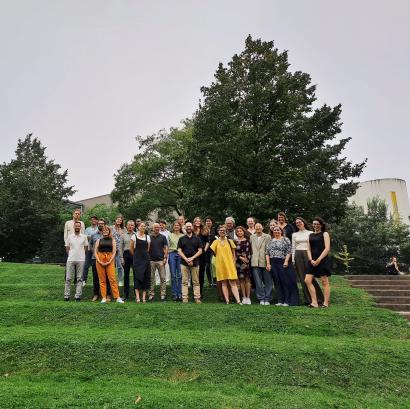Researchers in CLIC investigate medial, generic and spatial transfers and entanglements across a plurality of potential discourses, modalities, and methodologies. This transfer encompasses the phenomena of circulation, transformation and reinterpretation of literary, linguistic, cultural and performative practices and discourses in and across geo-cultural areas as well as historical and societal contexts. Accordingly, members of CLIC focus their research on, e.g., intra-, inter- and transmedial phenomena, hypermedia, (genre) hybridization and mixing, cross-cultural exchange, networks, interactions, contact zones, cross-border movements, intercultural communication, multilingualism, cultural imagery, transnationality, topographies, etc.
CLIC OFFERS SCHOLARS AN INTERDISCIPLINARY NETWORK TO STIMULATE RESEARCH ENGAGING WITH THE STUDY OF LITERARY, CULTURAL, LINGUISTIC AND/OR INTERMEDIAL ‘CROSSINGS’ ALONG THREE KEY CONCEPTS: MEDIA, GENRES AND SPACES.
MEDIA
Literature, theatre and performance traditionally belong to specific medial systems. However, these systems often interact in hybrid, intermedial ways. Definitions of intermediality range from a broad view on crossings between distinct media such as literature and theatre, to a more specific focus on the incorporation of one medium in another (e.g. the use of images or documentary material in literary texts or intersemiotic translation). Methodological issues, too, challenge both practitioners and scholars.
GENRES
The generic classification systems of literature and media, based on stylistic and structural features, are never neutral or ahistorical categories. They produce and communicate meaning, and also change over time, in response to specific socio-cultural but also political and economic contexts. Authors, translators and artists often consciously renew, transgress or mix genre conventions, and thus influence the reception of (translated) literature and theatre.
SPACES
Space has become an ever more influential and highly diversified theoretical category – ranging from the urban space of modernism to the contact zone of postcolonial theory and the rhizomatic network of the megalopolis. Through imaginary topographies and theatrical scenographies, transnational and multilingual identities are negotiated and disputed, as are new forms of politically committed artistic production.
Examining the forms, functions and characteristics of such crossings and the processes and products that result from them and viewing them as phenomena that are firmly embedded in historical and/or current social contexts also involves taking the cultural reciprocity and multidirectionality of (re)transfer into account as well as paying attention to the identification of marginal spaces and (networks of) minorities.

